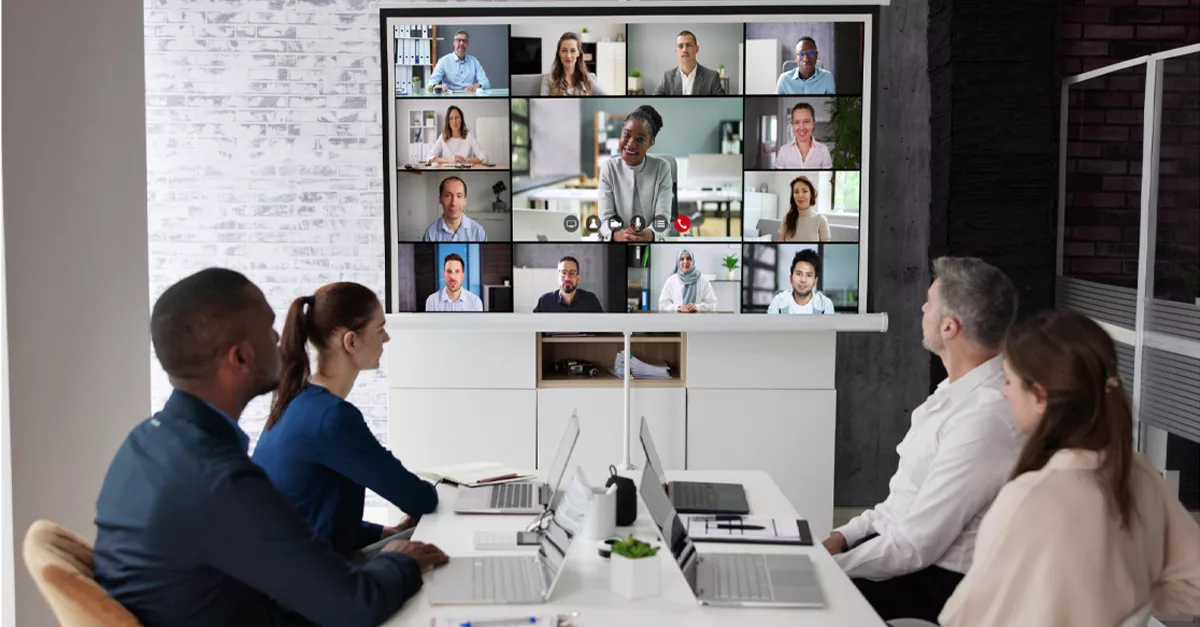
Effective Video Conferencing Solutions by Vallect: The Strategic Role of Camera Positioning
In the era of hybrid workforce, video conferencing, bridges distances & creates an efficient & effective collaboration platform & connects your team across the globe. As a common view customers focus on high end video camera systems but pay less attention towards camera placement. At Vallect we understand the technical nuances behind camera placement can make all the difference in designing a seamless and immersive video conferencing solution. Let’s delve into the intricacies of camera positioning:
Strategic impact of Camera Design on video conferencing setups-
- Field of View (FOV) Optimization:
The first consideration in camera positioning is maximizing the field of view. The camera should capture all participants and elements within the frame without distortion or loss of detail. Positioning of cameras plays a vital role & really depends on size of the room, member participants.
In the case of a small meeting rooms, the camera needs to be positioned as close to seated eye level as possible as this will best replicate the experience of speaking to someone in person.If people are sitting on 2 sides facing each other, we would need multiple auto focus , framing cameras to get a clear view of the room.
In the case of a large conference room, we need to have cameras with auto tracking which essentially tracks the moving/multiple presenters more precisely & auto framing to automatically adjust the camera’s view to include all participants, creating a more immersive & engaging collaboration experience.
Depending on the room size and layout, this may involve choosing wide-angle lenses or employing multiple cameras for comprehensive coverage.
- Dynamic Framing Options: Modern video conferencing solutions often require flexibility in framing options to accommodate different meeting formats and scenarios. Incorporating motorized pan, tilt, and zoom capabilities into camera positioning allows for dynamic framing adjustments during meetings. This flexibility ensures that participants remain centered and visible, regardless of their location within the room.
- Lighting Integration: Effective camera positioning goes hand in hand with strategic lighting integration.Properly positioning the camera in relation to light sources helps avoid glare, shadows, and overexposure, ensuring optimal image quality. Additionally, utilizing lighting fixtures with adjustable intensity and color temperature can further enhance the overall visual aesthetics of the video conferencing environment.
- Accessibility & Inclusivity: Considerations for camera positioning extend beyond technical specifications to inclusivity and accessibility. Ensuring that cameras are placed to capture all participants, including those with mobility constraints, is essential for fostering a sense of belonging and participation. Moreover, incorporating features such as automatic speaker tracking can further enhance inclusivity by dynamically adjusting camera focus based on active speakers.
- Reduced Latency Gap: Anticipating future needs and technological advancements is crucial in designing video conferencing solutions. In spite of precise camera positioning, Latency Gap plays a key role in seamless VC experience. Organizations are looking at solutions with built in cameras,audio that results in reduction of latency gap due to lesser processing time.
In conclusion, camera positioning plays a key role in designing effective video conferencing solutions. By having a technology partner like Vallect as your system integrator will enable you to strategically consider factors such as field of view optimization, eye-level perspective, distraction elimination, dynamic framing options, lighting integration while designing a video conferencing solution and ensuring immersive & engaging video conferencing experiences tailored to the unique needs of the clients.
Need help in designing optimized video conferencing solutions, Click on https://vallect.com/contact/ or call us at +91-7303435333
